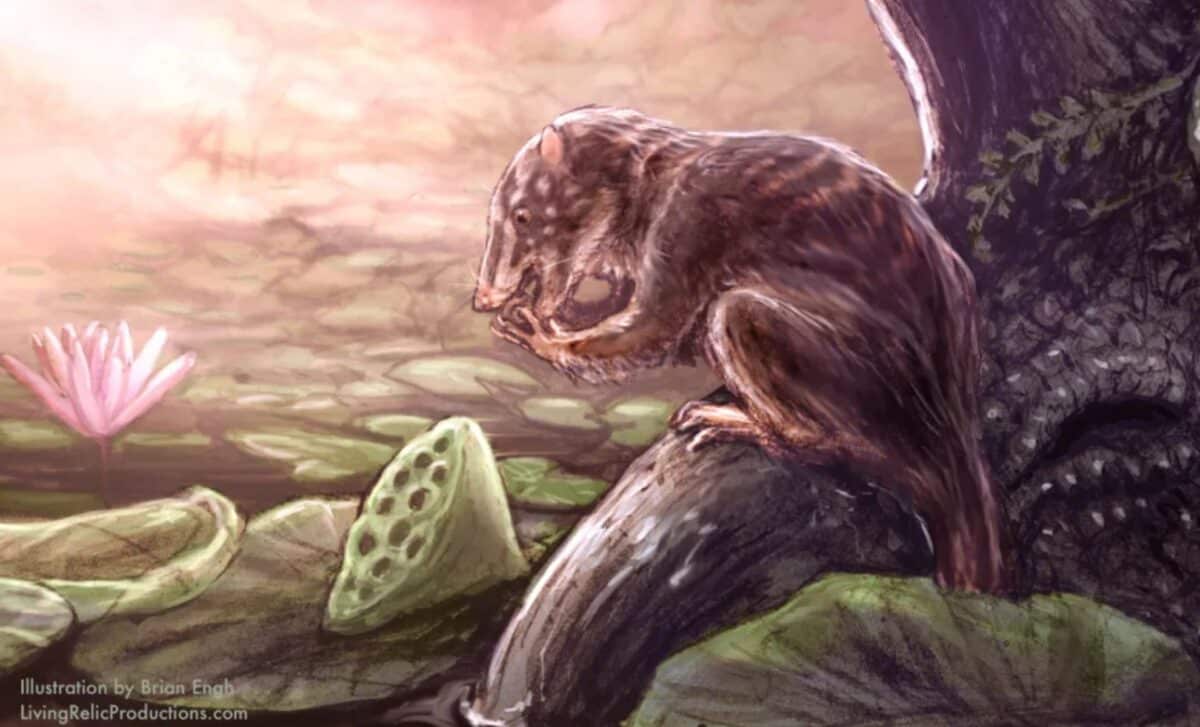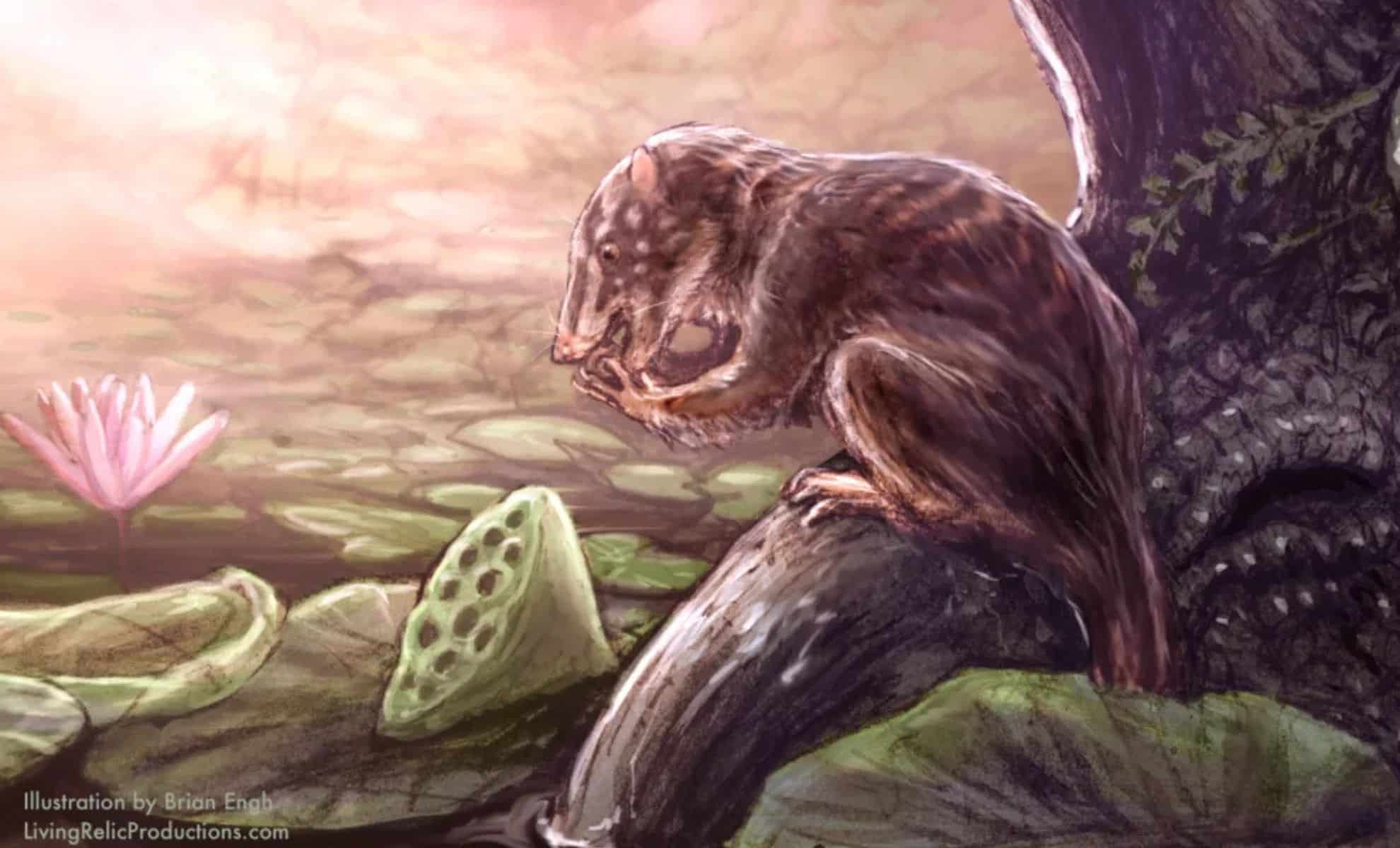Paleontologists have discovered the fossils of Heleocola piceanus, a 75-million-year-old swamp-dwelling mammal, in Colorado. This Late Cretaceous species, larger than most mammals of its time, offers new insights into mammal evolution and life near the ancient Western Interior Seaway. The study, published in PLOS ONE, sheds light on the relatively unexplored ecosystems of North America during the dinosaur age.
Ancient Swamp-Dwelling Mammal from Age of Dinosaurs Discovered in Colorado

Paleontologists have uncovered the remains of a new swamp-dwelling mammal species that lived approximately 70-75 million years ago during the Late Cretaceous period, a time when dinosaurs still roamed the Earth. The fossils, including a jawbone and teeth, were discovered near Rangely, Colorado, in a region that was once a swampy landscape along the edge of an ancient inland sea. The species has been named Heleocola piceanus, meaning "swamp dweller" in Latin, reflecting its habitat in this watery environment.
A Glimpse into the Late Cretaceous
The discovery of Heleocola piceanus offers a rare glimpse into a poorly documented time in North America’s ancient history. During this period, much of what is now Colorado was submerged by the Western Interior Seaway, an expansive body of water that split North America into two landmasses. The region where the new species was found likely resembled modern-day Louisiana, with deltas, marshes, and swamps providing a rich habitat for a variety of creatures, including turtles, dinosaurs, and large crocodiles.
According to Jaelyn Eberle, lead author of the study and a professor at the University of Colorado Boulder, this new species “fills a gap in our understanding of mammals living in swampy environments near the Western Interior Seaway.” The fossil assemblage, which includes a mix of terrestrial and marine species, suggests that Heleocola lived in close proximity to these water-rich habitats. “Heleocola likely lived near river channels, swamps, and deltas,” Eberle said, “and its discovery gives us a snapshot of an ancient ecosystem teeming with life.”

Among the Largest Mammals of Its Time
While most mammals from the Late Cretaceous were no larger than modern-day mice or rats, Heleocola piceanus stood out due to its relatively large size. Paleontologists estimate that the mammal weighed around 2 pounds, about the size of today’s muskrat. This makes it one of the largest known mammals from this period. As John Foster, a co-author of the study and scientist at the Utah Field House of Natural History, remarked when he first saw the jawbone fossil, “Holy cow, that’s huge.”
The teeth of Heleocola reveal important clues about its diet. Eberle and her team suggest that it was likely an omnivore, feeding primarily on plants but also possibly consuming insects and small vertebrates. “Its dental structure indicates that it had a plant-dominated diet, though it may have supplemented with small creatures from its swampy environment,” Eberle explained.
New Insights into Mammal Evolution Before the Extinction of the Dinosaurs
The discovery of Heleocola piceanus sheds new light on the evolution of mammals before the mass extinction event that wiped out the non-avian dinosaurs around 66 million years ago. Traditionally, mammals during the age of dinosaurs were thought to be small, insignificant creatures that lived in the shadows of much larger reptiles. However, the Heleocola fossil challenges this assumption by showing that some mammals were larger and more ecologically diverse than previously believed.
“Mammals didn’t really get large until after the asteroid wiped out the dinosaurs,” Eberle said, “but Heleocola shows that there were already some bigger mammals living alongside dinosaurs before that event.” The discovery highlights the potential for more large-bodied mammals to have existed during the Late Cretaceous, a time period that has yet to be fully explored in terms of mammalian diversity.
The study detailing the discovery of Heleocola piceanus was published in the journal PLOS ONE, where the team hopes their findings will encourage further exploration of ancient ecosystems in North America.



